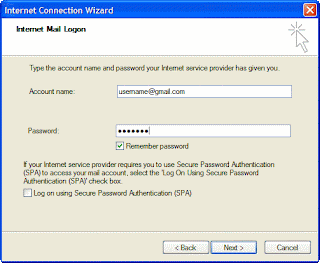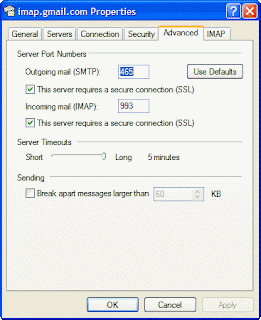To set up your Outlook 2003 client to work with Gmail:
1. Enable IMAP in Gmail. Don't forget to click Save Changes when you're done.
2. Open Outlook.
3. Click the Tools menu, and select E-mail Accounts...
4. Click Add a new e-mail account, then click Next.
5. Choose IMAP as your server type by clicking the radio button, and click Next.
6. Fill in all necessary fields to include the following information:
User Information- Your Name: Enter your name as you would like it to appear in the From: field of outgoing messages.
- Email Address: Enter your full email address (username@gmail.com). Google Apps users, enter your address in the format username@your_domain.com
Server Information
- Incoming mail server (IMAP): imap.gmail.com
- Outgoing mail server (SMTP): smtp.gmail.com
Login Information- User Name: Enter your full email address (including @gmail.com or @your_domain.com)
- Password: Enter your Gmail password.
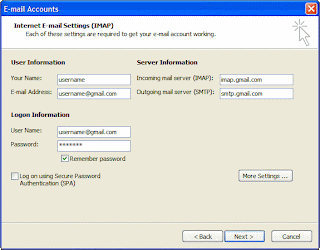
7. Click More Settings... and then click the Outgoing Server tab.
8. Check the box next to 'My outgoing server (SMTP) requires authentication' and select Use same settings as my incoming mail server.
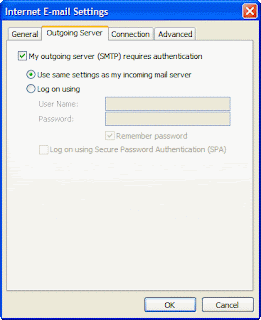
9. Click the Advanced tab, and check the box next to 'This server requires an encrypted connection (SSL)' under Incoming Server (IMAP).
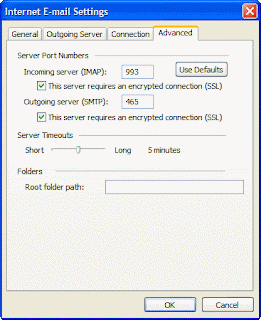
10. Check the box next to 'This server requires an encrypted connection (SSL)' under Outgoing Server (SMTP), and enter 465 in the Outgoing server (SMTP) box.
11. Click OK.
12. Click Test Account Settings... After receiving the message 'Congratulations! All tests completed successfully', click Close.
13. Click Next, and then click Finish.
 If you can't open your Personal Folders file (.pst) or your Offline Folder file (.ost), or you suspect that your .pst or .ost data file is corrupted, you can use the Inbox Repair tool (Scanpst.exe) to diagnose and repair errors in the file. The Inbox Repair tool scans only the .pst or .ost file, not your mailbox on the server running Microsoft Exchange. The tool determines whether the file structure is intact. If it is not intact, the Inbox Repair tool resets your file structure and rebuilds the headers.
If you can't open your Personal Folders file (.pst) or your Offline Folder file (.ost), or you suspect that your .pst or .ost data file is corrupted, you can use the Inbox Repair tool (Scanpst.exe) to diagnose and repair errors in the file. The Inbox Repair tool scans only the .pst or .ost file, not your mailbox on the server running Microsoft Exchange. The tool determines whether the file structure is intact. If it is not intact, the Inbox Repair tool resets your file structure and rebuilds the headers.







